Time and Cost Challenge: Next-Generation Fighters and Bombers for the US Air Force and Navy
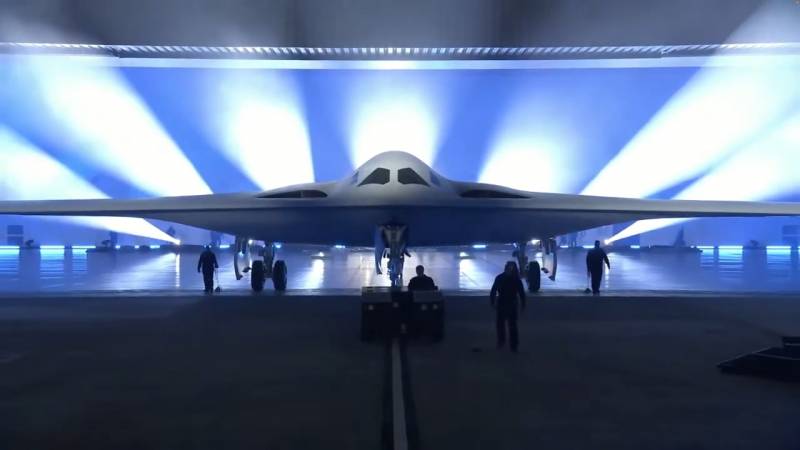
Rolling out the first prototype B-21, December 2022. Photo by the US Department of Defense
Aviation The US industry, represented by several leading enterprises, is currently simultaneously developing several promising combat aircraft for the Air Force and Navy. The result of these projects in the long term will be the adoption of a new strategic bomber and two fighters, land and deck. All promising projects are subject to special requirements, which leads to an increase in the complexity of development, and also affects the timing and cost of work.
Strategic sector
In the interests of the strategic aviation of the Air Force, a new long-range bomber B-21 Raider is being developed. It takes a few more years to complete the work, and the new type of aircraft will appear in the troops only in the distant future. With their help, they plan to replace the current B-1B and B-2A bombers - by the time the serial B-21s appear, they will have time to finally work out their resource.
Preliminary study of the concept of a promising long-range bomber for the US Air Force started back in 1999. The project was called the Next-Generation Bomber and included the development of an aircraft that could enter service over the next two decades. The NGB program was curtailed at the end of the XNUMXs, but already at the beginning of the XNUMXs, a similar Long Range Strike Bomber project was launched with different requirements.
The LRS-B program successfully passed through the research stage, and in 2014 a competition was announced to develop a new bomber. On October 27, 2015, the Pentagon chose the winner and gave him a full-fledged design contract. The aircraft under the designation B-21 Raider is being created by Northrop Grumman.
In 2019, the construction of the first experimental bomber of a new type began. On December 2, 2022, it was rolled out of the workshop and made an official presentation. Five more aircraft are at various stages of construction.
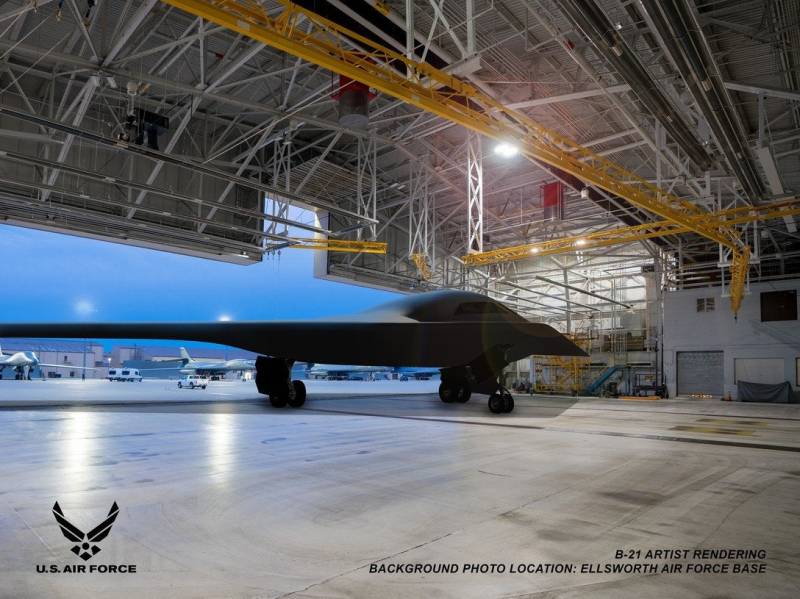
Virtual B-21 in a real airbase hangar. U.S. Department of Defense graphics
According to current plans, the first B-2023 will take to the air in 21, and later the following prototypes will join it. In the coming years, it is planned to organize the assembly of serial machines, which will be transferred to the customer after 2026-27. In 2030, the first unit on the Raiders will reach initial operational readiness. In total, they want to build at least a hundred new bombers, and such a fleet will be created by the end of the thirties.
Even at the stage of developing the requirements for the LRS-B, it was decided that the cost of one aircraft should not exceed $550 million in 2010 prices (more than $750 million in current prices). In 2016, the estimated price of the aircraft was classified. According to the latest estimates, the project is still slightly beyond the established limits - the cost of the bomber has already exceeded $ 700 million. Last year, citing the US Air Force, the press reported that the total cost of developing, building and operating 100 aircraft would exceed $ 200 billion.
next generation fighter
Also in the interests of the Air Force, the next sixth generation fighter is being developed, so far known under the working name Next Generation Air Dominance (NGAD). In the distant future, it will ensure the re-equipment of tactical aviation, allow abandoning the technology of previous generations and give the Air Force fundamentally new opportunities.
Work on the 6th generation fighter began 10-12 years ago with a corresponding study by the DARPA agency. In 2014, the Aerospace Innovation Initiative program was launched, aimed at finding and developing the necessary technologies. In 2018, the main NGAD program was launched, which should lead to the emergence of a full-fledged combat aircraft.
Recently, the Air Force opened the acceptance of applications for the development of a full-fledged project. Next year, preliminary projects will be compared and the most successful will be selected. After that, a contract for the continuation of work will appear. In accordance with it, over the next few years, the contractor will complete the design, build and test experimental equipment.
Serial production and rearmament of the Air Force will begin only in the thirties, and the exact timing of this remains unknown and, probably, has not yet been determined. The possibility of building about 200 new fighters was officially mentioned. The production of such a series will take quite a long time and can last until the forties inclusive.
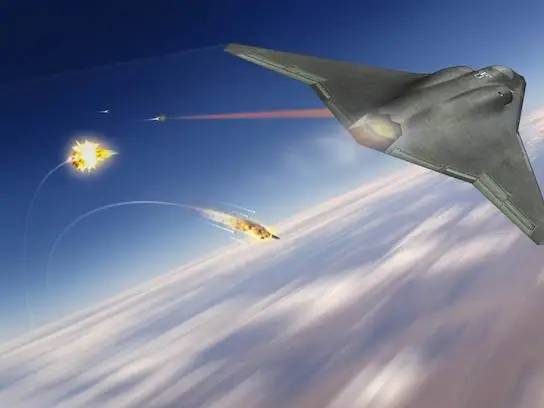
NGAD fighter concept from Northrop Grumman
Some financial features of the NGAD program are known. Thus, they were going to spend up to 9 billion dollars on the research and development stage. The cost of the aircraft, for obvious reasons, has not yet been determined. NGAD is expected to be a record-breaking expensive aircraft, costing hundreds of millions of dollars per aircraft. If we are talking about “only” two hundred million, then the construction of 200 desired aircraft alone will cost $40 billion, not including development and operation costs.
deck perspectives
The Air Force wants its own next-generation fighter. Their carrier-based aircraft design is designated F/A-XX. Such an index indicates continuity with the current 4+ generation technology. If the project is successful, then two x's will be replaced by the serial number of the aircraft.
The need to create a new carrier-based fighter-bomber to replace the F / A-18E / F was first discussed at the end of the 2012s. With some delay, in XNUMX, the corresponding research work began. Over the next few years, the Navy and related organizations were engaged in identifying opportunities and needs. From time to time, various wishes were revealed and fragmentary data about the project were published. In addition, aircraft manufacturers demonstrated their concepts of the future F/A-XX.
In early 2019, it was reported that the Navy received several proposals in the form of preliminary designs and is now comparing them. In the near future they had to choose a project for further development. Apparently, the F / A-XX program has successfully passed this stage, but the current state of affairs remains unknown.
According to plans ten years ago, the F / A-XX fighter should go into series and get into naval aviation in the early thirties. At the same time, the work schedule for the twenties was not specified, and information of this kind is still missing.
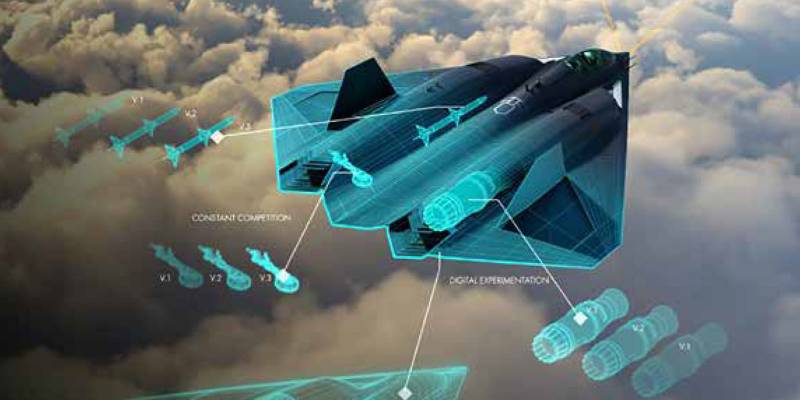
US Air Force NGAD concept
Both earlier and now, the Navy and contractors cannot even name the approximate cost of a promising carrier-based aircraft and the program as a whole. According to various estimates, even if the design is simplified and all the desired features are abandoned, the serial F / A-XX will not be cheaper than the current F-35C fighter. Now the US Navy has approx. 550-560 F / A-18E / F fighters, and this allows you to imagine the volume of future orders for new equipment - and the total cost of updating the fleet. Even with a favorable set of circumstances and savings, the F / A-XX program will cost tens of billions.
Difficult and expensive
It is easy to calculate that about 20 years will pass from the start of research work under the LRS-B program to the start of operation of the first serial bombers. The NGAD and F / A-XX fighter development programs for the Air Force and Navy, respectively, should meet the same deadlines.
A strategic bomber project, a series of 100 aircraft, and their operation during the estimated period could cost taxpayers $ 200 billion. Two fighters in this respect will be cheaper, but in total the costs for them may reach the same level. As a result, the Pentagon will have to find several hundred billion for new aircraft over the next 10-20 years.
The timing of the work and the financial features of promising US projects in the field of combat aviation once again confirm the long-known facts. In addition, there are characteristic trends that, in the end, hinder the development of individual areas and aviation in general.
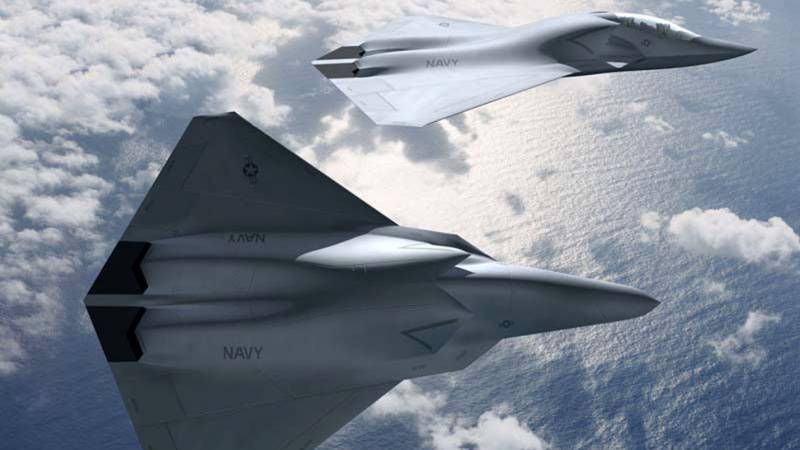
Deck F / A-XX from Boeing
It is no secret that next-generation combat aircraft are always subject to increased requirements - they must surpass their predecessors in all parameters and capabilities. With each new generation, the creation of a new fighter or bomber becomes more and more difficult. Each new project takes more time to develop. In addition, along with the technical characteristics and complexity, the cost of the finished aircraft increases.
The Pentagon is well aware and understands this problem and is even trying to take action. So, within the framework of the LRS-B program, from the very beginning they set the maximum cost of the aircraft, for which they are even ready to sacrifice performance. In turn, the NGAD program proposed to introduce new development methods that will save on field tests. In addition, this approach will speed up development.
Apparently, the proposed solutions will reduce the cost of programs and individual aircraft, as well as accelerate their development. However, costs will still remain high. At the same time, similar trends will be observed not only in the field of combat aircraft, but also in the development of UAVs, aviation weapons, etc. – when presenting increased requirements and applying fundamentally new solutions.
Thus, the Pentagon and its contractors have to find a rather difficult balance between increasing performance and achieving the desired level, the complexity of the project and its cost. Whether it will be possible to cope with such a task within the framework of current projects, time will tell.
Information